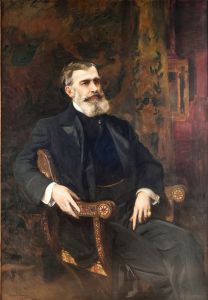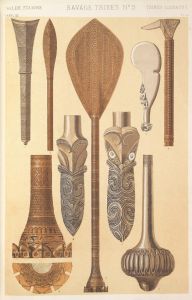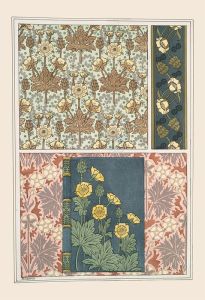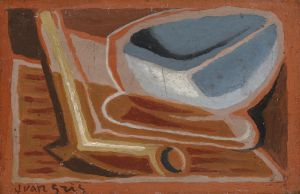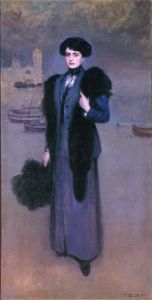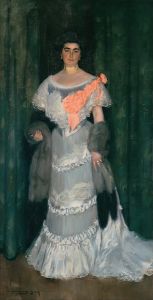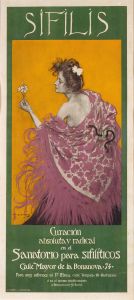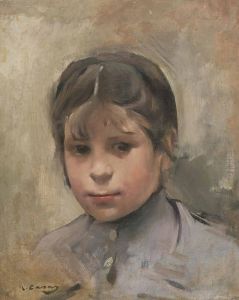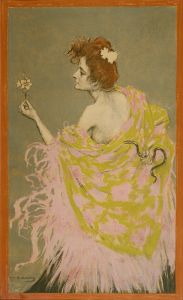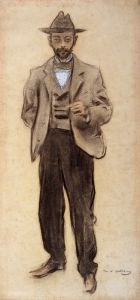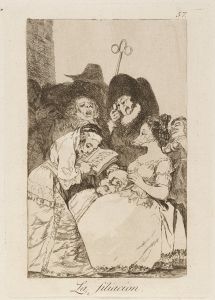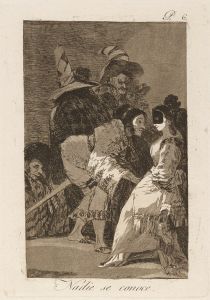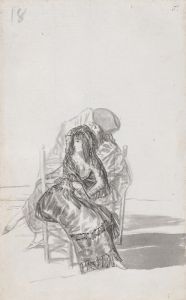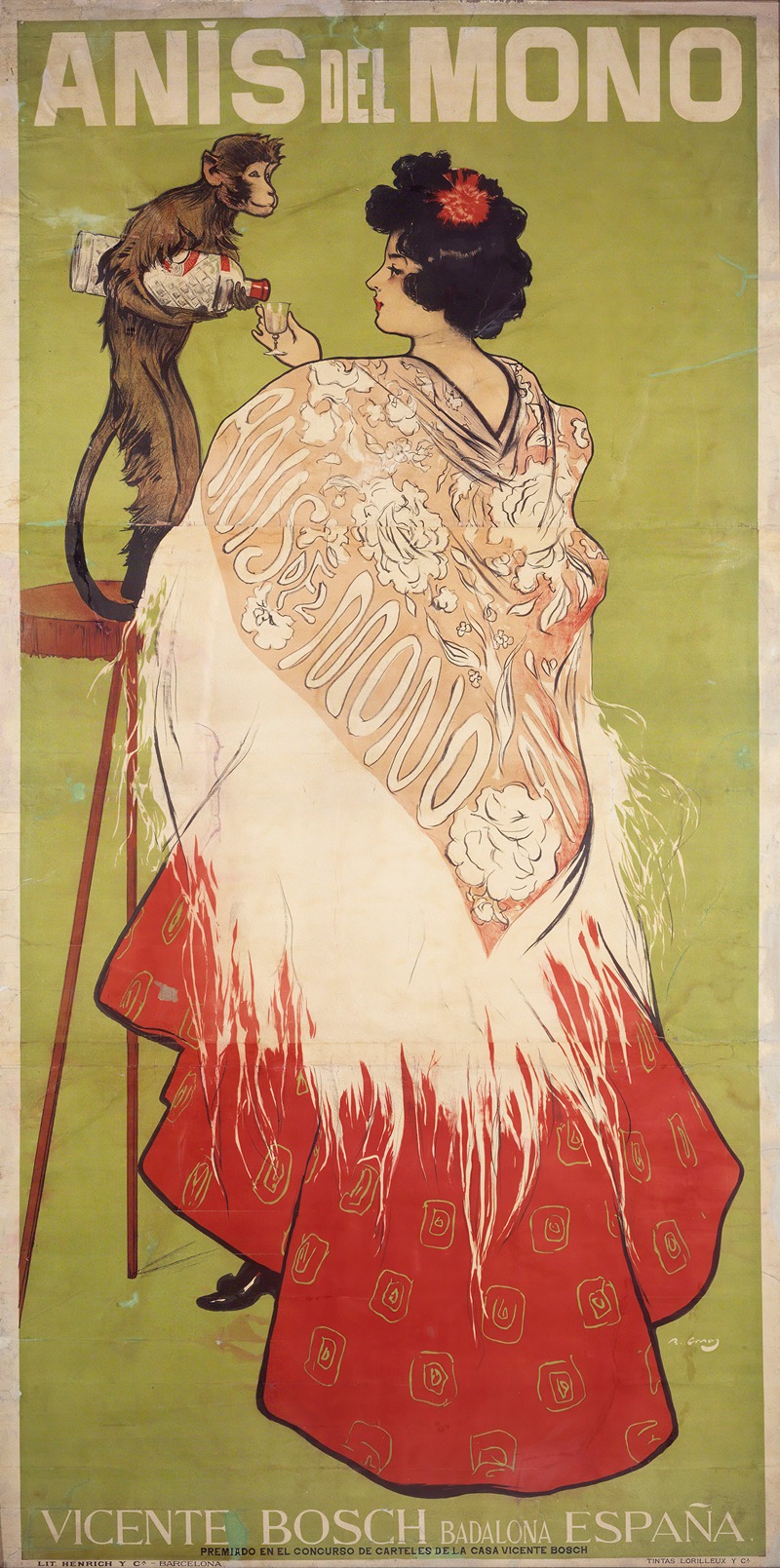
Anís Del Mono
A hand-painted replica of Ramón Casas’s masterpiece Anís Del Mono, meticulously crafted by professional artists to capture the true essence of the original. Each piece is created with museum-quality canvas and rare mineral pigments, carefully painted by experienced artists with delicate brushstrokes and rich, layered colors to perfectly recreate the texture of the original artwork. Unlike machine-printed reproductions, this hand-painted version brings the painting to life, infused with the artist’s emotions and skill in every stroke. Whether for personal collection or home decoration, it instantly elevates the artistic atmosphere of any space.
"Anís del Mono" is a notable painting by the Spanish artist Ramón Casas, created in 1898. Casas was a prominent figure in the Catalan modernisme movement, which paralleled the broader European Art Nouveau style. His works often depicted contemporary social scenes, capturing the essence of late 19th and early 20th-century life in Spain.
The painting "Anís del Mono" is an advertisement poster for the Anís del Mono brand, a popular anisette liqueur produced in Badalona, a city near Barcelona. The brand was established in the late 19th century by Vicente Bosch, and it quickly became known for its distinctive bottle design and marketing strategies. The label of Anís del Mono features a monkey, which is a play on the word "mono," meaning "monkey" in Spanish.
Casas' poster for Anís del Mono is a classic example of his ability to blend fine art with commercial art. The artwork features a stylishly dressed woman holding a glass of the liqueur, with the brand's name prominently displayed. The use of bold colors and elegant lines is characteristic of Casas' style and the modernisme movement. This poster is not only a piece of advertising but also a work of art that reflects the cultural and social dynamics of the time.
The collaboration between Ramón Casas and Anís del Mono is an early example of the intersection between art and commerce, where artists were commissioned to create visually appealing advertisements that would capture the public's attention. This trend was part of a broader movement during the late 19th and early 20th centuries, where advertising began to be seen as an art form in its own right.
Casas' work on this poster contributed to the brand's identity and helped cement its place in the market. The image of the elegantly dressed woman enjoying the drink suggested a sense of sophistication and modernity, appealing to the aspirations of the middle and upper classes of the time. The poster's success is a testament to Casas' skill in creating compelling visual narratives that resonate with audiences.
In addition to its commercial success, "Anís del Mono" holds a place in art history as an example of how artists of the modernisme movement engaged with contemporary culture. Casas, along with other artists of his time, played a crucial role in shaping the visual language of advertising, influencing how products were marketed and perceived by the public.
Today, the "Anís del Mono" poster is appreciated not only for its historical significance but also for its artistic merit. It is a part of the legacy of Ramón Casas, whose work continues to be celebrated for its contribution to both art and advertising. The poster remains an iconic image, representing a unique blend of artistic creativity and commercial appeal that was ahead of its time.





